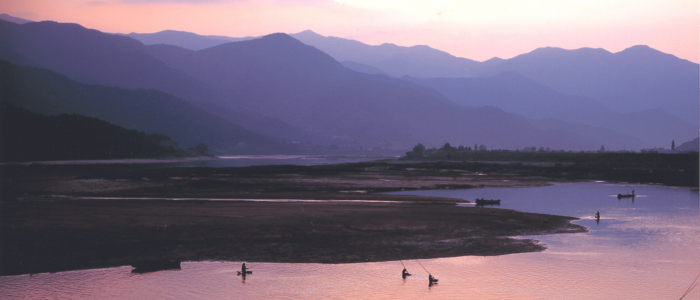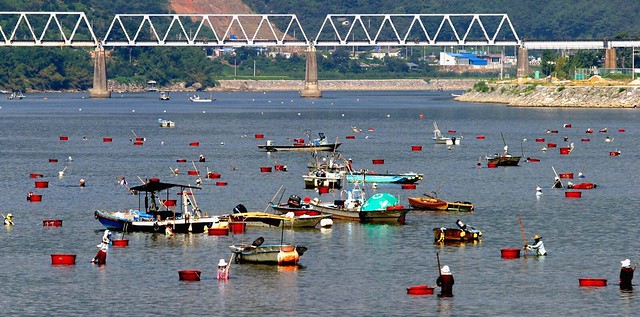Sonteul (hand net) Fishery System for gathering Marsh Clam in Seomjingang River, Republic of Korea
GIAHS since 2023

- ©Korea Fisheries Infrastructure Public Agency
Summary | Detailed Information | Partners | Annexes |
|---|
The Sonteul (hand net) Fishery System for Marsh Clam in Seomjingang River Estuary is located in the central west part of the Republic of Korea. In most of the country’s rivers the marsh clam is almost extinct. Against this backdrop, the environmental and ecological diversity of the River basin, bolstered by the local community’s efforts, serves, as a hospitable habitat for this deep-burrowing species.
To catch them, fishers wade into the river and gather marsh clams by scraping the riverbed using a tool known as a georaengyee (hand dredge). This traditional method has proved a sustainable practice, well adapted to the river’s ecological and environmental characteristics, helping to eliminate pollutants sedimented at the bottom of the river while facilitating the provision of new organic material and the generation of aquatic oxygen.
Today, as for many generations, marsh clams are still the main source of food and income for local residents, although they also grow rice, green tea, green plum, persimmon, chestnut, and other agricultural products.
From April to November, the sonteul (hand net) harvesting of marsh clams creates a distinct “cultural landscape”. Capitalizing on this system of traditional fishery, a marsh clam festival is held in every July and the fishery season always draws significant numbers of tourists keen to photograph and experience in person the landscapes and traditional activities.


